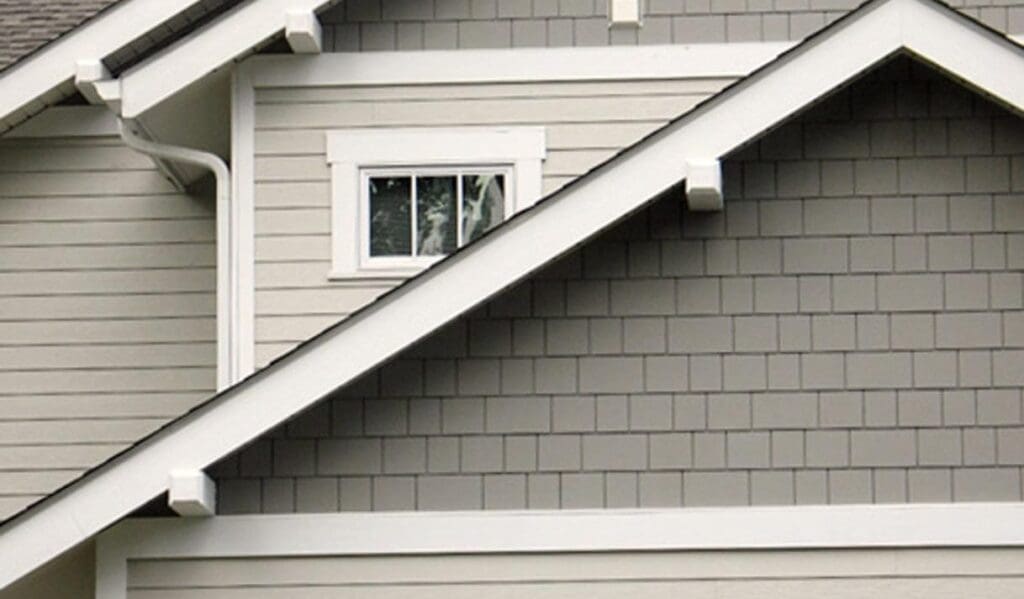When it comes to home improvement ideas to give your home an immediate facelift, replacing the exterior siding is one of the quickest ways to do it. Two of the most popular siding options in the Pacific Northwest are James Hardie fiber cement siding and vinyl siding. But there are differences when it comes to James Hardie siding vs vinyl you should be aware of when making a final decision.
Both vinyl and fiber cement siding does an excellent job of protecting your most valuable asset from weather damage. We’re no strangers to wet weather in the Portland area, so making sure the interior of your home is protected from rain, snow, melting ice, and other moisture is a major concern.
And while both materials have their advantages, when it comes to quality and longevity, James Hardie stands out as the superior option. Let’s take a closer look at these two materials and why you should choose James Hardie over vinyl for your next home remodeling siding replacement project.
James Hardie Siding vs Vinyl
James Hardie siding and vinyl siding are two popular options for home exteriors. Here’s an in-depth comparison of their differences:
Material
Appearance
Durability
Fire Resistance
Energy Efficiency
Cost
Material
When comparing Hardie board siding to vinyl siding side by side, the main difference is immediately clear. The James Hardie fiber cement board is five times as thick as vinyl and is made from durable materials. Vinyl siding is made from polyvinyl chloride (PVC) resin, which makes it more lightweight than fiber cement products.
So while it may be easier to carry around, and look similar from afar, vinyl just doesn’t have the same hearty makeup as Hardie Board. If you’re looking for a sturdy and long-lasting option, Hardie board is the way to go. The differences in materials also play a part in other comparisons on the list as well.
Appearance
James Hardie Siding can mimic the appearance of traditional wood siding, including textures and grain patterns, because of its thicker composition. It comes in a wide range of colors and styles, allowing for customization, and is easily cleaned with a garden hose. ColorPlus technology also means Hardie board holds its color longer than vinyl, too.
Vinyl Siding comes in hundreds of color options as well but typically has a smooth and uniform surface. It cannot replicate the exact look of natural wood as effectively as James Hardie siding. It’s also more difficult to paint than fiber cement boards, so you may not be able to achieve that custom color that’s only available from the paint store. It can also stain after time without proper maintenance.
Durability
If you’re looking for siding that can endure Mother Nature’s toughest moments, James Hardie has got you covered. Not only is it tough against wild weather swings, but it also has the additional benefits of being mold and insect resistant. And with its solid construction, you won’t have to worry about it denting when the wind whips around debris during a storm.
On the other hand, vinyl siding is susceptible to denting, even during hailstorms. It can also warp in extreme temperatures and are prone to cracking. In both cases, however, proper installation is important. No matter how durable a product is, if it’s put on the house incorrectly, it’s bound to fail.
Fire Resistance
When it comes to building materials, safety always comes first. With climate changes, wildfires have unfortunately become more common and more dangerous. James Hardie offers a range of very fire-resistant products, giving you peace of mind knowing that you’ve made the right choice for your home.
Vinyl siding is particularly susceptible to warping under extreme heat. Whether you live in a place with sweltering summer temperatures or have high amounts of sun exposure, your vinyl siding is at risk of losing its luster over time, warping, bubbling, and more. Vinyl siding can melt away in a matter of minutes when exposed to direct flame and is no longer able to protect your home.
Energy Efficiency
If you’re looking for ways to make your home more energy efficient, you’ll want to choose fiber cement siding over vinyl. Fiber cement has better insulation properties than vinyl, which can help keep your home warm in the winter and cool in the summer. This improved insulation means you may be able to save on your heating and cooling costs over time.
While it’s possible to add additional insulation to vinyl siding during installation, that’s an added cost in both material and labor. With fiber cement, you get the benefit of better insulation properties without any additional work or expenses. It’s a simple solution that can make a big difference in your home’s energy efficiency.
Cost
Although cost is always a concern, it shouldn’t be the only factor when making a decision. In both cases, however, new siding is one of the best ways to recoup your improvement investment. Fiber cement will cost more, but you’ll also get more money back when it comes time to sell.
When deciding between James Hardie siding and vinyl siding, it’s important to consider factors such as your budget, curb appeal, durability needs, and maintenance preferences. But at the end of the day, fiber cement siding checks all of the boxes. For more information about Hardie Plank products, reach out to Joseph Ketner Construction and see how we can give your home an immediate upgrade.
